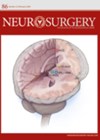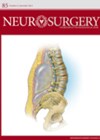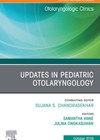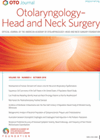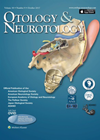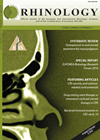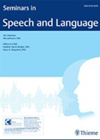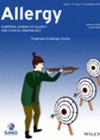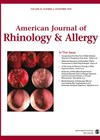
Journal Reviews archive for 2020
Is there a need for magnetic resonance imaging six-month post-radiosurgery for vestibular schwannoma?
With advances in imaging and radiation technologies, small, slowly growing vestibular schwannomas (VS) are treated primarily with either observation or stereotactic radiosurgery (SRS). Routine magnetic resonance (MRI) scans with gadolinium are obtained six months and one year after SRS in...
Treatment outcomes and dose rate effects following gamma knife stereotactic radiosurgery for vestibular schwannomas
Gamma knife radiosurgery (GKRS) is one of the definitive stereotactic radiotherapy treatment modalities for vestibular schwannoma (VS) management. Its efficacy depends on the cobalt-60 source which has a half-life of 5.26 years. According to the study authors, the actual rate...
What to do if adenotonsillectomy does not cure sleep apnoea in children?
This article reviews the management of children with persistent obstructive sleep apnoea (OSA) following adenotonsillectomy (AT). Risk factors for patients to have persistent disease include obesity, being Afro-Caribbean and existing co-morbidities such as craniofacial and neuromuscular disorders. Initial assessment of...
Intraoperative identification of primary tumours in unknown primary head and neck cancer using transoral laser microsurgery with frozen sections
The aim of the study was to compare the sensitivity and specificity of intraoperative identification of primary tumours in patients with unknown primary head and neck squamous cell carcinoma (UP HNSCC) using transoral laser microsurgery (TLM) with frozen sections, with...
Cochlear implantation in adults has a positive impact on overall cognitive function as early as six months postop
The link between improving hearing and thus improving cognition is an important emerging area of research in hearing rehabilitation, due to the independent association between hearing loss and dementia. This study uses visually assessed neurocognitive tests of working memory, information...
Tablet-audiometer school hearing screening in the context of a developing country
This paper presents a novel use of innovation to tackle the challenges of providing school-age hearing screening in low and middle income countries (in this case Nicaragua, second poorest in the western hemisphere), from the creators of a tablet-based audiometer...
TIVA in FESS: a meta-analysis
This meta-analysis is from Rochester, New York, and aims to add more evidence for the use of TIVA in endoscopic sinus surgery (FESS) to arm rhinologists keen for a quick, bloodless FESS in the discussion with anaesthetists who prefer inhalation....
Counting up discourse
Speech and language researchers and health professionals alike strive to measure communication abilities using relevant and psychometrically sound tools. Discourse measures are potential tools which reflect everyday communication more accurately than other more traditional measures. However, time has been a...
Back to the future: aphasia therapy post stroke
When speech and language therapist first started working with people with stroke-related aphasia, they employed a general stimulation approach, the same with every patient they met. In the '70s this changed, and a more tailored approach was developed whereby therapists...
Can we predict risk of adverse events preoperatively in patients undergoing head and neck cancer surgery?
Ed’s Choice reviews a paper aiming to create a reliable index to predict postoperative outcomes in head and neck cancer patients. This interesting study identifies variables that may assist in risk assessing prospective surgical candidates. There have been a few...
Allergic rhinitis, the usual suspects
Allergic rhinitis (AR) is characterised by allergen binding to IgE on mast cells and basophils and subsequent histamine, prostaglandine D2 (PGD2) and cysteinyl leukotrienes (cysLTs) release causing early-phase response. This is followed by late-phase response mediated by eosinophils. Other cells,...
Smell training is also effective in older patients
Olfactory loss is a common problem with a significant impact on quality of life. It has been demonstrated that olfactory training (OT) improves olfactory function in younger patients, but this study focuses in on patients aged 45 years and older....

